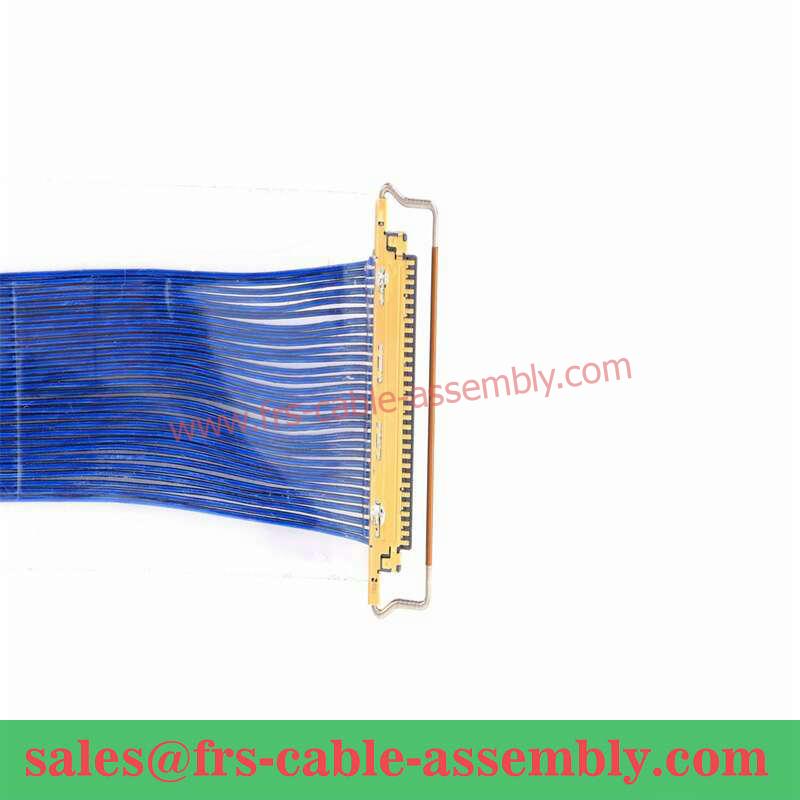micro coaxial cable spec
Exploring the Benefits of Micro Coaxial Cable Specifications for High-Speed Data Transfer The world of data transfer is constantly evolving,…
Table of Contents
Exploring the Benefits of Micro Coaxial Cable Specifications for High-Speed Data Transfer
The world of data transfer is constantly evolving, and the need for faster, more reliable connections is ever-increasing. Micro coaxial cable is a relatively new technology that is quickly becoming the go-to choice for high-speed data transfer. This article will explore the benefits of micro coaxial cable specifications for high-speed data transfer. Micro coaxial cable is a type of cable that is made up of two concentric conductors, an inner conductor and an outer conductor. The inner conductor is typically made of copper or aluminum, while the outer conductor is usually made of a metal mesh or braided wire. This type of cable is designed to provide a high-speed connection with minimal interference.| Aviation/Aerospace Cable Assemblies | Endoscopy Cable Assemblies |
| Multi-core Micro Coaxial | Medical Imaging Cable Assemblies |
Understanding the Different Types of Micro Coaxial Cable Specifications and Their Applications
Micro coaxial cable is a type of cable that is used in a variety of applications, from telecommunications to medical imaging. It is a type of cable that is designed to provide high-speed data transmission and is often used in applications where space is limited. Micro coaxial cable is composed of two or more insulated conductors that are surrounded by a dielectric material and then encased in a protective outer jacket. The specifications of micro coaxial cable vary depending on the application. For example, the type of dielectric material used, the size of the conductors, and the type of outer jacket can all affect the performance of the cable. It is important to understand the different types of micro coaxial cable specifications and their applications in order to make the best choice for your project. One of the most common types of micro coaxial cable is RG-58. This type of cable is often used in telecommunications applications, such as connecting computers to modems or routers. It is composed of two insulated conductors that are surrounded by a dielectric material and then encased in a protective outer jacket. The RG-58 cable is designed to provide high-speed data transmission and is often used in applications where space is limited. Another type of micro coaxial cable is RG-59. This type of cable is often used in video applications, such as connecting a television to a satellite receiver. It is composed of two insulated conductors that are surrounded by a dielectric material and then encased in a protective outer jacket. The RG-59 cable is designed to provide high-resolution video transmission and is often used in applications where space is limited.
Finally, there is RG-6 cable. This type of cable is often used in medical imaging applications, such as connecting an ultrasound machine to a monitor. It is composed of two insulated conductors that are surrounded by a dielectric material and then encased in a protective outer jacket. The RG-6 cable is designed to provide high-resolution imaging transmission and is often used in applications where space is limited.
Understanding the different types of micro coaxial cable specifications and their applications is essential for making the best choice for your project. Each type of cable has its own unique characteristics and is designed for specific applications. By understanding the different types of micro coaxial cable specifications and their applications, you can make an informed decision about which type of cable is best suited for your project.
Another type of micro coaxial cable is RG-59. This type of cable is often used in video applications, such as connecting a television to a satellite receiver. It is composed of two insulated conductors that are surrounded by a dielectric material and then encased in a protective outer jacket. The RG-59 cable is designed to provide high-resolution video transmission and is often used in applications where space is limited.
Finally, there is RG-6 cable. This type of cable is often used in medical imaging applications, such as connecting an ultrasound machine to a monitor. It is composed of two insulated conductors that are surrounded by a dielectric material and then encased in a protective outer jacket. The RG-6 cable is designed to provide high-resolution imaging transmission and is often used in applications where space is limited.
Understanding the different types of micro coaxial cable specifications and their applications is essential for making the best choice for your project. Each type of cable has its own unique characteristics and is designed for specific applications. By understanding the different types of micro coaxial cable specifications and their applications, you can make an informed decision about which type of cable is best suited for your project.







